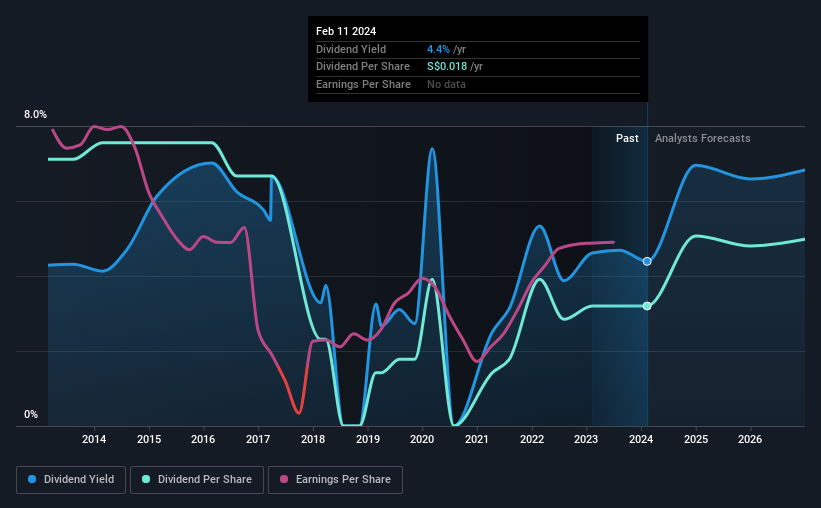Pan-United's (SGX:P52) Dividend Will Be SGD0.018
Pan-United Corporation Ltd (SGX:P52) will pay a dividend of SGD0.018 on the 17th of May. This means the dividend yield will be fairly typical at 4.4%.
View our latest analysis for Pan-United
Pan-United's Payment Has Solid Earnings Coverage
While it is always good to see a solid dividend yield, we should also consider whether the payment is feasible. Prior to this announcement, Pan-United's dividend was comfortably covered by both cash flow and earnings. This means that a large portion of its earnings are being retained to grow the business.
The next year is set to see EPS grow by 34.6%. If the dividend continues along recent trends, we estimate the payout ratio will be 35%, which is in the range that makes us comfortable with the sustainability of the dividend.
Dividend Volatility
The company's dividend history has been marked by instability, with at least one cut in the last 10 years. The annual payment during the last 10 years was SGD0.04 in 2014, and the most recent fiscal year payment was SGD0.018. This works out to be a decline of approximately 7.7% per year over that time. A company that decreases its dividend over time generally isn't what we are looking for.
The Dividend Looks Likely To Grow
Given that the track record hasn't been stellar, we really want to see earnings per share growing over time. It's encouraging to see that Pan-United has been growing its earnings per share at 45% a year over the past five years. The company doesn't have any problems growing, despite returning a lot of capital to shareholders, which is a very nice combination for a dividend stock to have.
Pan-United Looks Like A Great Dividend Stock
In summary, it is good to see that the dividend is staying consistent, and we don't think there is any reason to suspect this might change over the medium term. The company is easily earning enough to cover its dividend payments and it is great to see that these earnings are being translated into cash flow. All of these factors considered, we think this has solid potential as a dividend stock.
Market movements attest to how highly valued a consistent dividend policy is compared to one which is more unpredictable. Meanwhile, despite the importance of dividend payments, they are not the only factors our readers should know when assessing a company. Taking the debate a bit further, we've identified 1 warning sign for Pan-United that investors need to be conscious of moving forward. Looking for more high-yielding dividend ideas? Try our collection of strong dividend payers.
Have feedback on this article? Concerned about the content? Get in touch with us directly. Alternatively, email editorial-team (at) simplywallst.com.
This article by Simply Wall St is general in nature. We provide commentary based on historical data and analyst forecasts only using an unbiased methodology and our articles are not intended to be financial advice. It does not constitute a recommendation to buy or sell any stock, and does not take account of your objectives, or your financial situation. We aim to bring you long-term focused analysis driven by fundamental data. Note that our analysis may not factor in the latest price-sensitive company announcements or qualitative material. Simply Wall St has no position in any stocks mentioned.

 Yahoo Finance
Yahoo Finance 
